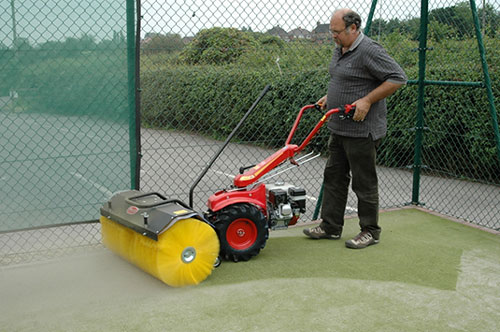Tennis Court Maintenance
Making the most of your new tennis court: a step by step guide to ensuring a superb facility for decades to come
Anyone for tennis? You should be – with the ancient sport more popular than ever tennis courts are massively in demand. Tennis players take their sport seriously – so meticulous planning is crucial to meet discerning expectations amongst amateurs and professionals alike. The better your tennis court serves play, the more popular it will become and the more success it will generate. So it’s a good idea to fully understand the key decisions that need to be made to ensure that any tennis court you’re building – from a brand new tennis court to LTA standards to a home tennis court for residential use – meets exemplary standards across the board.
Plan your lighting to fit your tennis court design
Especially if this is your first time building a tennis court, here’s something that might have slipped your mind. Make sure your tennis court design takes serious account of lighting conditions. Why? Because players will become highly irritated if they have to cope with dingy lighting, dusk or midday glare that impedes their game. The ideal orientation for an outdoor tennis court is North/South as this achieves maximum natural light throughout the day. If you ensure your tennis court build adheres to this principle, you’re off to a good start.
If you’re building an indoor tennis court, artificial lighting must be planned carefully to ensure optimum visibility. The Lawn Tennis Association sets specific standards for different levels of play. There is a great choice of standard and bespoke systems so it really is possible to tailor your tennis court design to the specific needs of your players, whilst managing your own budget effectively.
Choose your tennis court surface to suit your users
The ultimate surface for tennis is a grass court – but unless you build tennis courts for professional players the maintenance implications make it the least viable option. Your choice of tennis court surfacing should be determined by three key factors – the playing level of your users, whether your court is indoor or outdoor, and the budgetary and maintenance implications.
The most common choice is between a clay or a hard tennis court surface, with hard wearing asphalt surfaces widely used in the UK for their durability, good bounce and all weather performance. Some players testify to preferring the feel of clay tennis court surfacing, and a new breed of artificial clay surfaces have revolutionised ongoing tennis court costs as they require almost no maintenance. Sports halls across the UK typically use a synthetic tennis court surface in acrylic for good all round playing properties and budgetary benefits. A word of warning – these are not suitable for outdoor use as they are impermeable and cannot cope with rain. Visit our guide to understanding sports surfaces for more detail on the options available.
Ensure your tennis court design delivers on dimensions
Tennis is a game of science as well as skill. Whether your players are beginners, amateurs or professionals they will require a tennis court with exact dimensions in order to develop their play. A general purpose tennis court can combine doubles and singles markings to make maximum use of limited space – but like all tennis court designs this is subject to stringent regulations. The Lawn Tennis Association’s guide to dimensions will tell you everything you need to know. Make sure that your tennis court markings are highly visible in order to benefit your players. A brightly coloured acrylic coating overlaying your tennis court surface and clean white markings will do the job beautifully, whilst the coating has the added benefit of protecting your tennis court surface for longevity and performance.
Incorporate fabulous facilities to draw users to your tennis court
To encourage visitors to spend as much time at your tennis court as possible, ensure that the facilities in your tennis court design offer added value. Spectator courts will require audience seating, but even a training tennis court can benefit from a viewing area. Ensure you plan adequate sanitation facilities for comfortable use, and consider offering a refreshment area too.
Finally, pay close regard to all health and safety regulations and disability access in order to sail through planning permission and achieve a safe, inclusive environment for players and spectators alike. See our guide to ensuring the success of your planning application to find out more.
If you pay close attention to these key decisions your new tennis court will be a superb facility that delivers to player expectations long into the future. Now use our tennis court design tool to get started on creating the perfect tennis court for you!

 01621 85 86 86
01621 85 86 86 


 Sports - Tennis
Sports - Tennis
Share this page!